The Boy at the Back of the Class
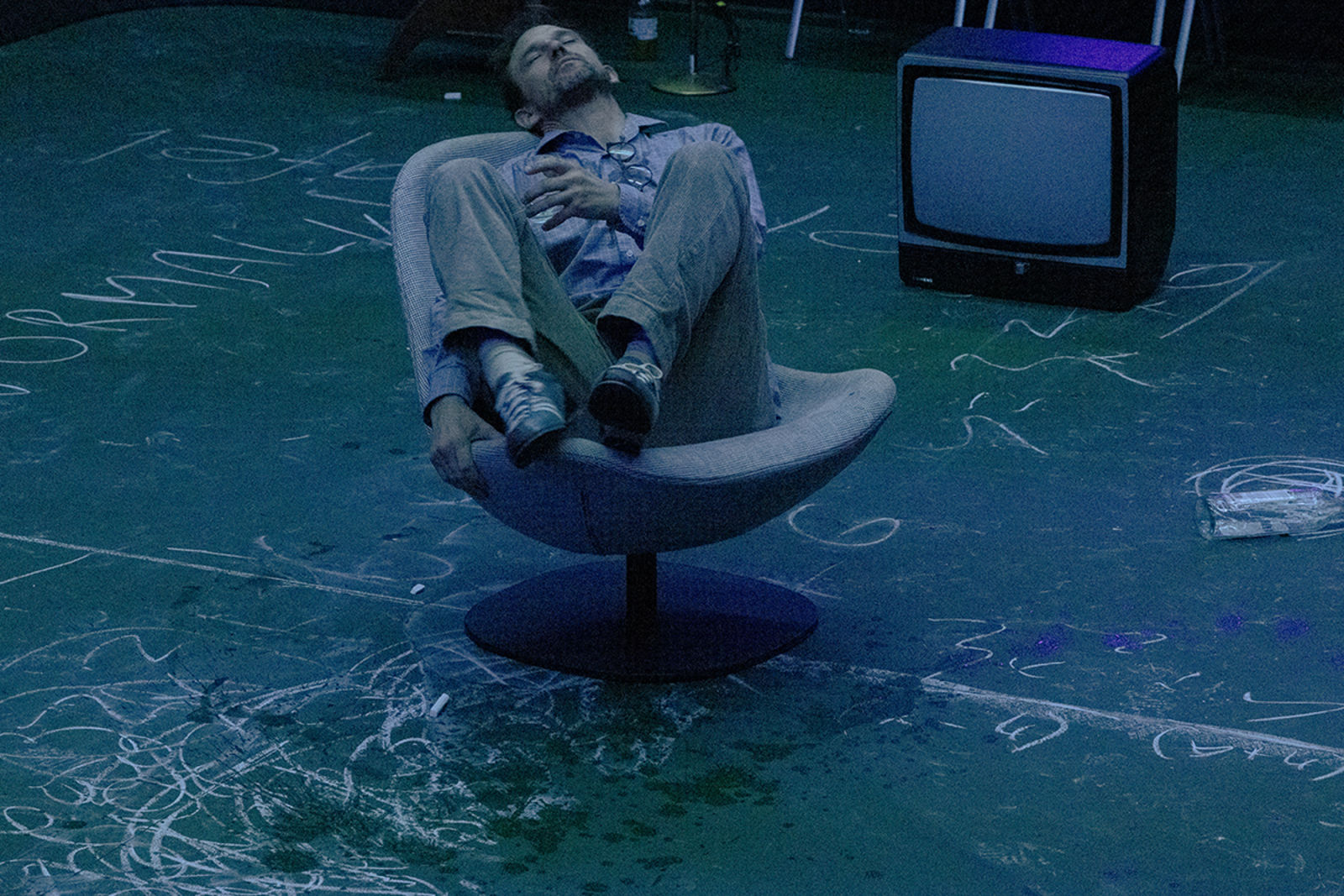
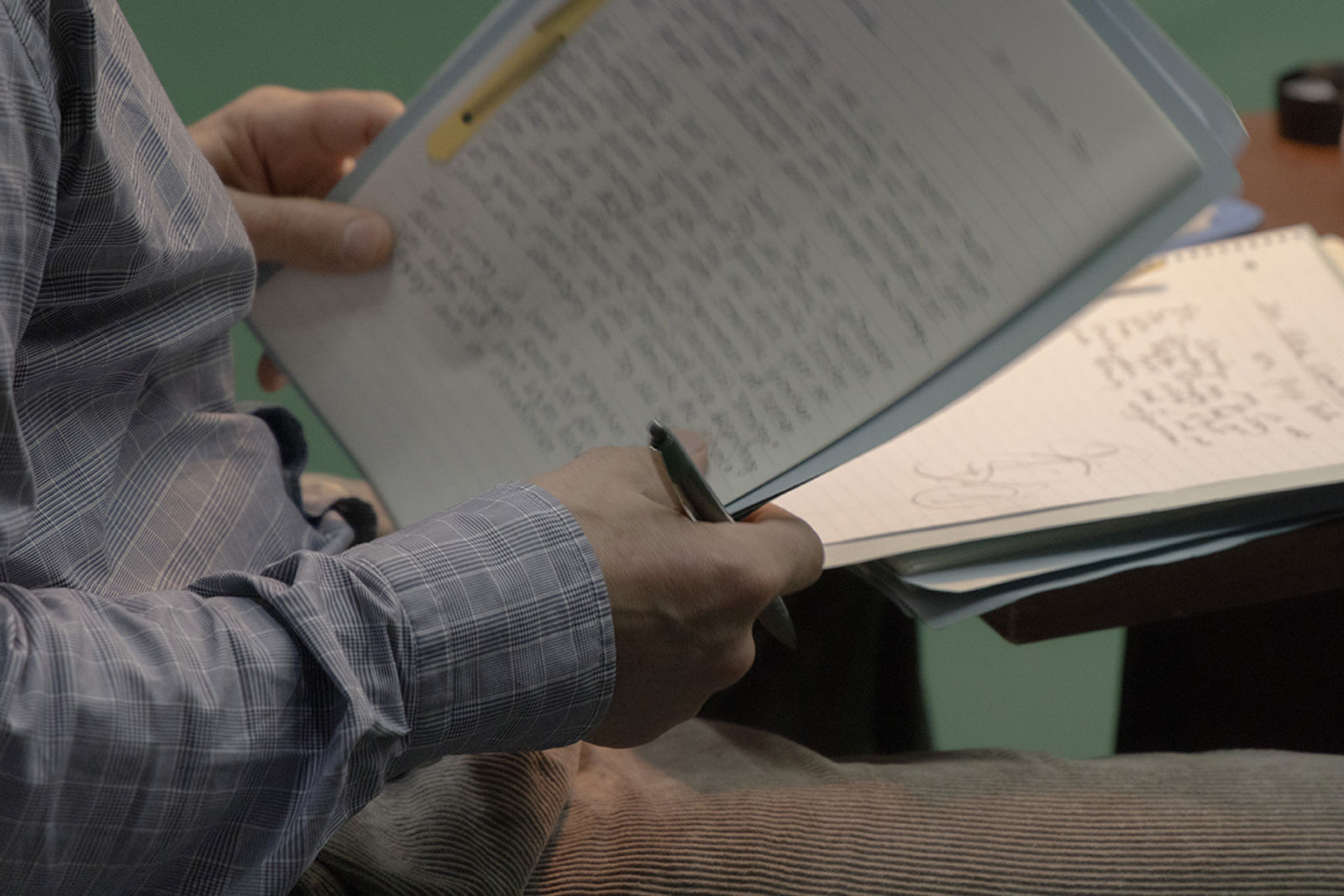
Daniel Lommatzsch
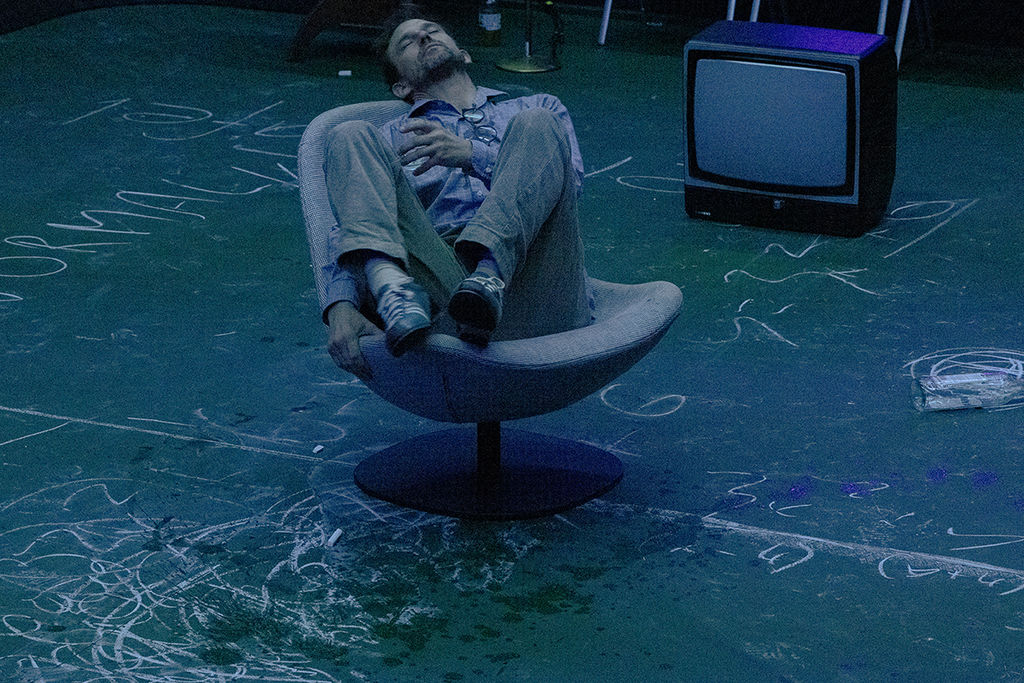
Daniel Lommatzsch
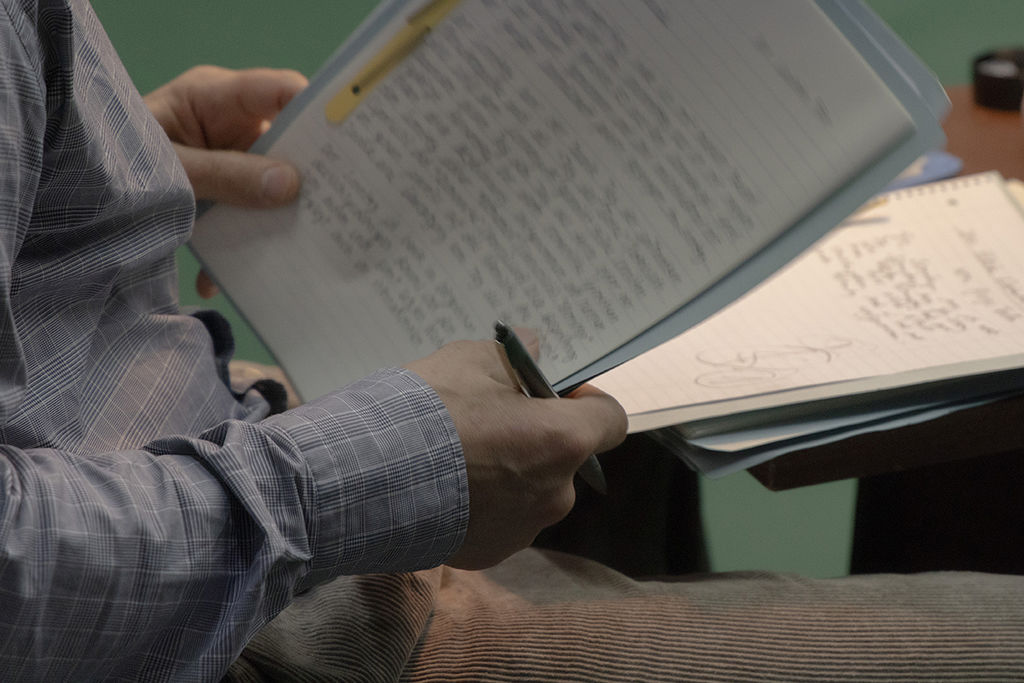
Daniel Lommatzsch
About this Evening
Claudio, a schoolboy, writes essays about invading the home of a other family, where he first disputes the role of the son, then the husband. Hermann, his teacher, is so fascinated by the reading that he becomes first a mentor, then an accomplice, and finally a victim of his pupil. The Spanish playwright Juan Mayorga creates a dense psychological study of the limits of pedagogy and class with the story of The Boy at the Back of the Class. The pupil’s essays give rise to situations in the family home, the teacher’s corrections create dialogues between the characters, in a rapid succession of scenes, The Boy at the Back of the Class mixes life and literature. The director Christiane Jatahy is known for such tightrope walks between reality and fiction. After Before the Sky Falls, the rewriting of Shakespeare’s Macbeth at the Pfauen, she focuses entirely on acting in her second work in the Box of the Schiffbau. In an ellipse around the round stage, the audience can imagine themselves in the back row, from which the play of the others can be easily observed, and yet they are in the middle of the house of the strange family.
Trailer © Luisa Ricar
- Author
- Juan Mayorga
- Translation
- Stefanie Gerhold
- Staging
- Christiane Jatahy
- Artistic assistance, Stage design and Lighting
- Thomas Walgrave
- Costume design
- Paula Henrike Herrmann
- Music
- Pedro Cunha Vituri
- Master electrician
- Frank Bittermann
- Dramaturgy
- Bendix Fesefeldt
- Production manager
- Henrique Mariano
- Audience Development
- Mathis Neuhaus
- Touring & International Relations
- Sonja Hildebrandt
- Artistic Mediation T&S
- Manuela Runge
- Production Assistance
- Mary Udosen
- Stage design assistance
- Lenki Behm
- Costume design Assistance
- Ruth Wulffen
- Inspection
- Aleksandar Sascha Dinevski
- Soufflage
- Rita von Horváth
- Surtitles Set-up
- Agnieszka Fietz (Panthea)
- Surtitles Translation
- Sinikka Weber
- Surtitles Operators
- Victoria Engler / Kevin Mutter / Isabelle Koch
Supported by the Society of Friends of the Schauspielhaus Zürich (gfs)
In collaboration with Neumarkt 17
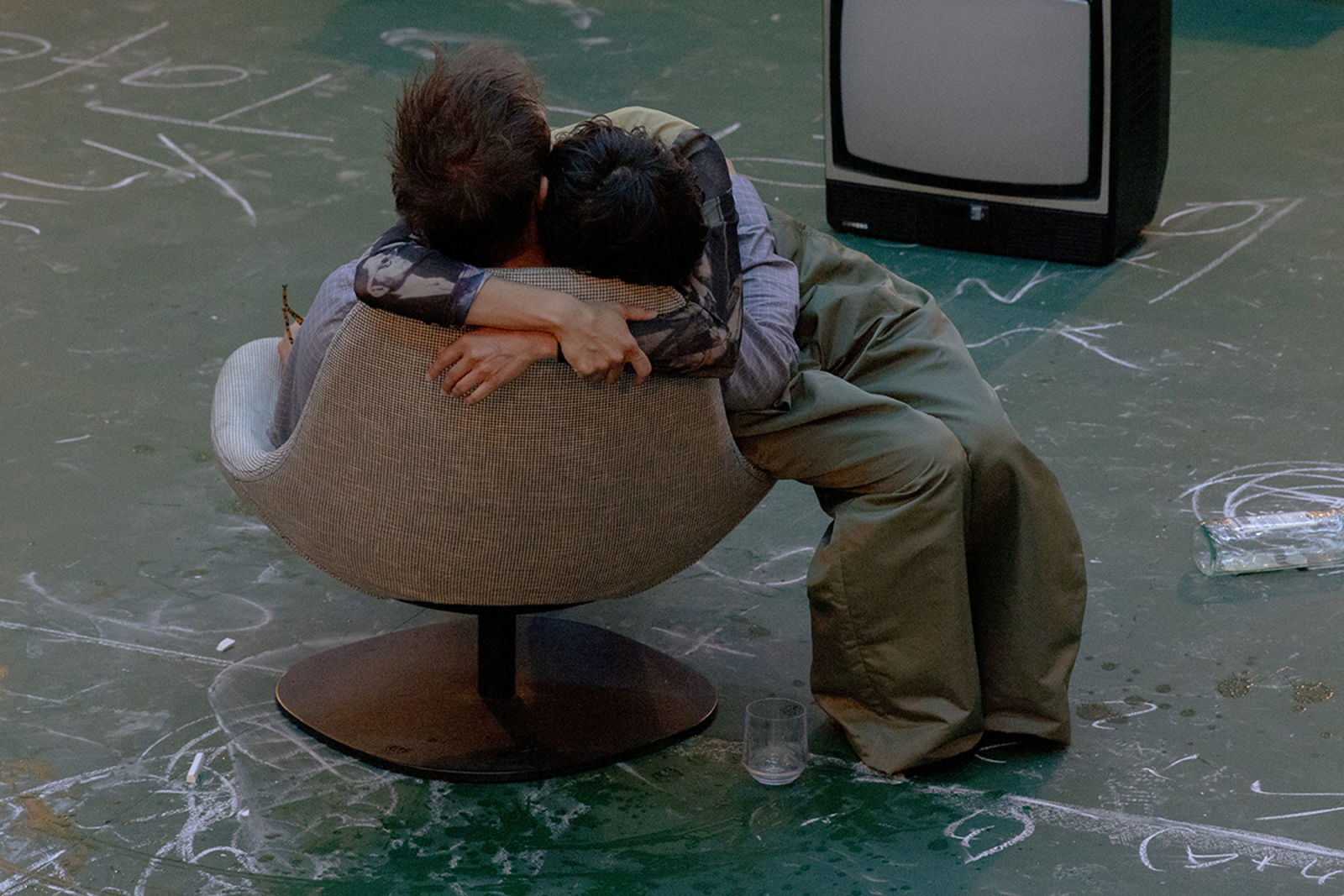
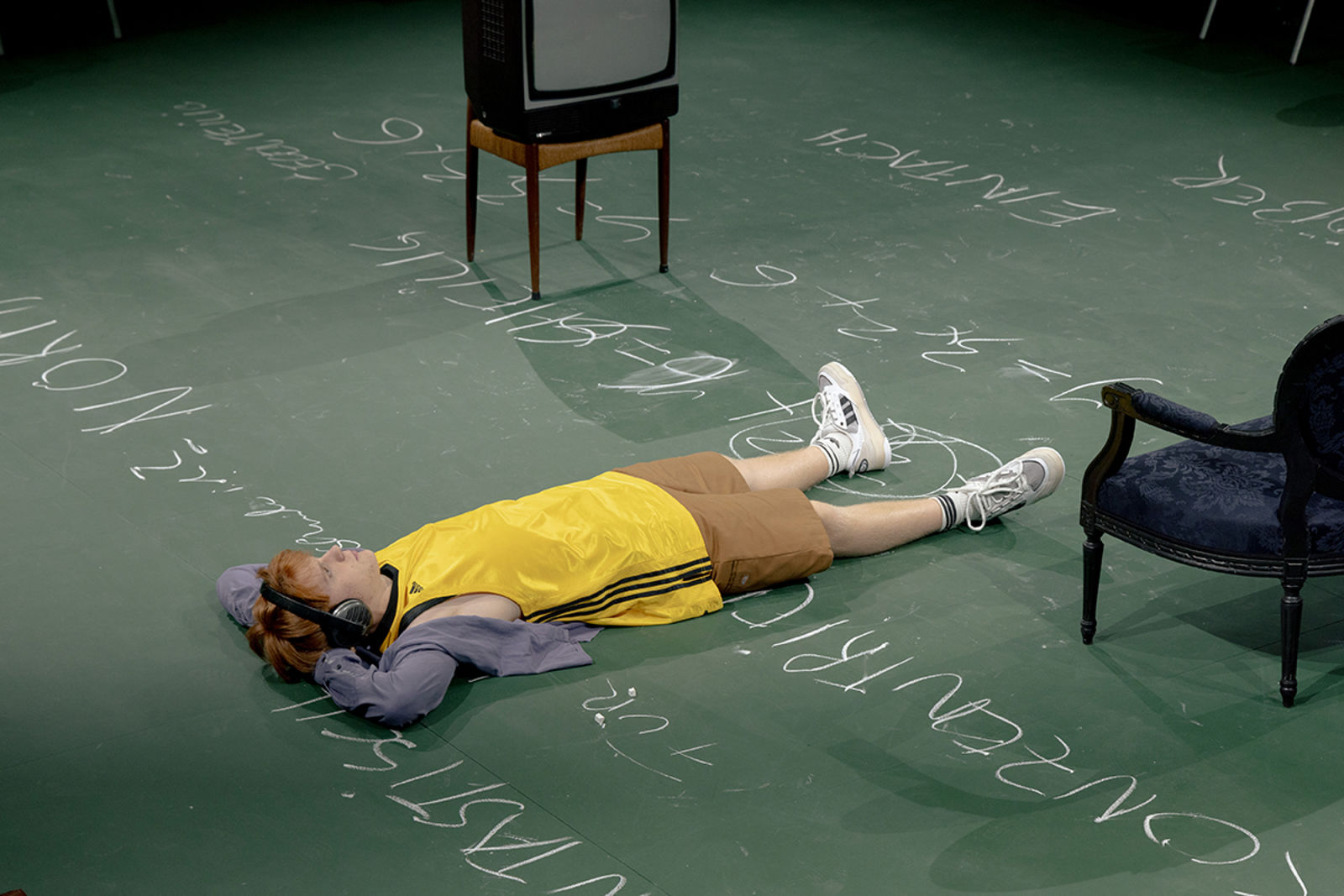
Daniel Lommatzsch, Tabita Johannes
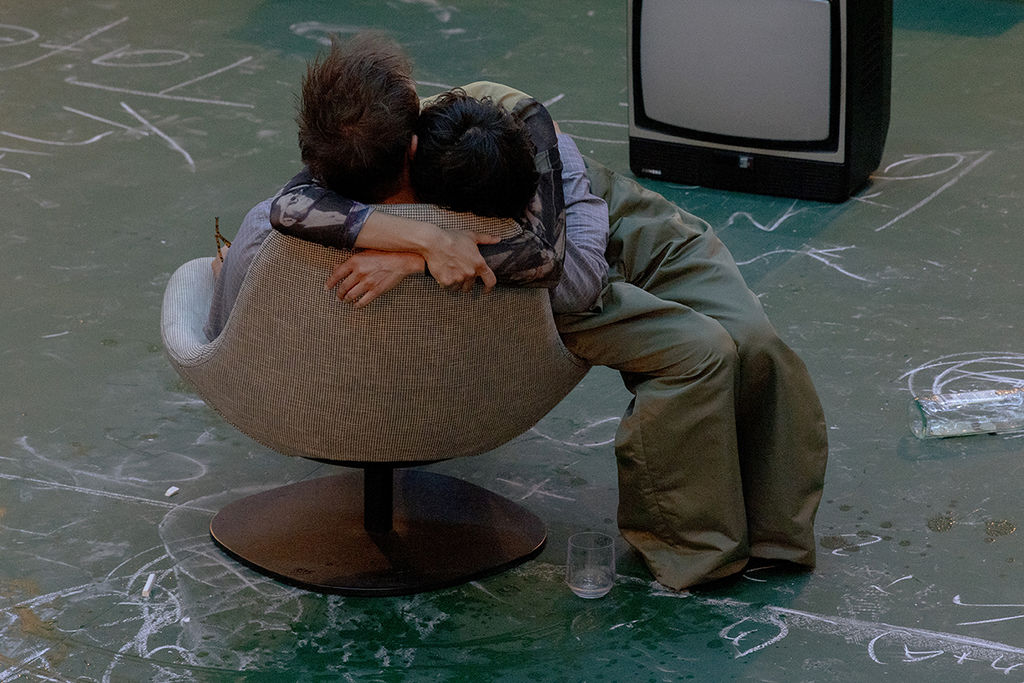
Daniel Lommatzsch, Tabita Johannes
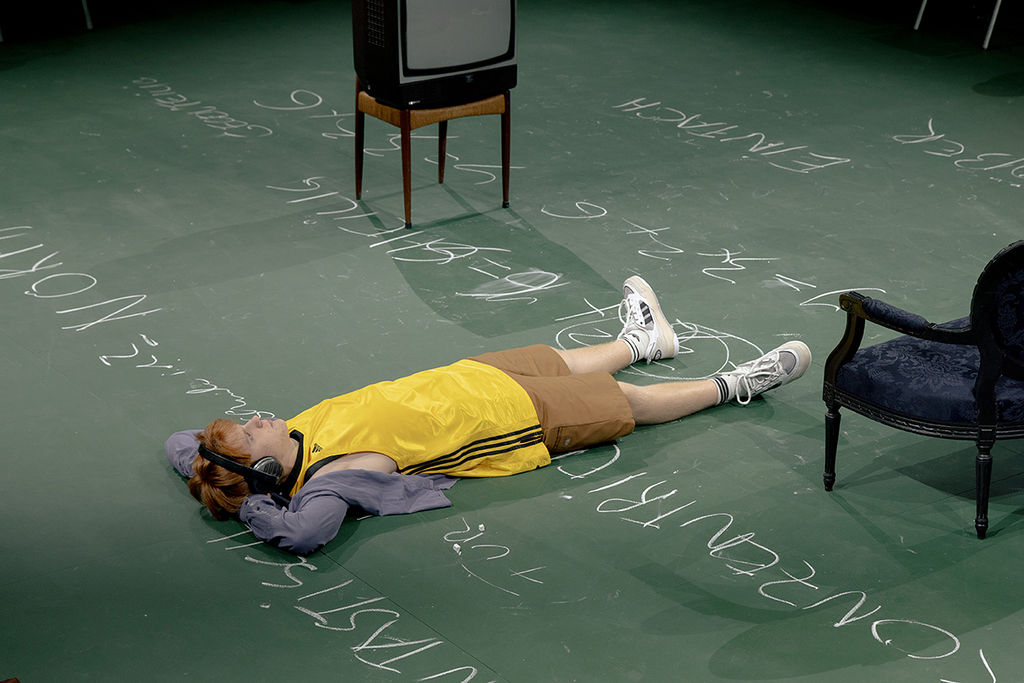
Silas Lio Glanzmann
About this Play
Finding the right material, i.e. the search for a suitable play or project for a director, is one of the most exciting processes in theatre. Often the director approaches the dramaturgy with an idea for a piece. Sometimes there is a desire to work with an actor or actress and a suitable role is sought for the collaboration. Or, there is already a collaboration with an author and a director’s signature for the text is sought. In the case of Christiane Jatahy’s new work at the Schauspielhaus Zürich, the Brazilian director came up with a set idea: She wanted to create a circular stage in which the audience sits around the performance as if in an arena, and thereby focus entirely on acting in her work.
So the search began for a chamber play: a play in an intimate setting, with few actors on stage, without extras or much decor. Chamber plays often have a psychological approach and focus on the impact of the conversations between the characters. Since the development of naturalistic drama at the end of the 19thcentury, this genre has existed all the way into contemporary drama. Over the course of several months, the dramaturgy team exchanged ideas with Christiane Jatahy about different texts, and a more precise search profile slowly emerged. In her works, Christiane Jatahy almost always explores the blending of reality and fiction, turning biographical parts of an actor into literary fiction, combining documentary material with novels, or creating different narrative levels that blend together through the skilful inclusion of videos.
Christiane Jatahy incorporated into this search plays by Latin American and Spanish authors who are still little known in German-speaking countries. Juan Mayorga was born in 1965 in Madrid, and is a writer, philosopher and dramaturge who runs the Teatro de La Abadía and the Corral de Comedias de Alcalá de Henares in his hometown. In addition to philosophy, he studied mathematics and did his doctorate on Walter Benjamin's philosophy of history. During his dissertation, he taught mathematics for five years at a secondary school in Madrid. Juan Mayorga has been friends with Christiane Jatahy for many years; he accompanied the director during her first attempts at theatre in the late 1990s during part of her training in Spain. Nevertheless, this is the first time Christiane Jatahy has staged a text by her friend and mentor.
Juan Mayorga’s oeuvre includes more than 40 plays and several adaptations of classics; so far, four of his plays have been translated into German. In The Boy at the Back of the Class from 2006, everything that was essential for Christiane Jatahy in her search for a source material comes together: A small ensemble that negotiates dramatic situations in quick dialogues in naturalistic language, a setting that gets by with little spatial assertion, and a story that mixes reality and fiction.
At first, the play The Boy at the Back of the Class is a story about the blending of reality and fiction: the pupil Claudio writes essays in literature class, which his teacher Hermann reads and then discusses with his wife Joana. In the essays, Claudio describes how he gains access to the home of his classmate Rafa in order to explore the life of the unfamiliar family there. Hermann is fascinated by the reading and supports Claudio’s ventures, believing that he is encouraging his writing talent. An unusual feature of the play’s structure is that it is written without a scene division. The dialogue between Hermann and Joana changes in one sentence to a conversation between Hermann and Claudio, and the scenes in the unfamiliar family’s house emerge from reading the essays. While Joana is still talking to Hermann about Claudio's last essay, the latter is already rewriting it, and the interaction between Rafa and his parents changes. When reading the play, you tumble from situation to situation almost breathlessly, and in Christiane Jatahy’s production, too, one replica swiftly proceeds to the next, the players on stage moving at a precise pace to do justice to the rhythm of Juan Mayorga’s language.
The fact that the essays become situations between Rafa’s family on stage suggests at first that Claudio creates the situations in his imagination. In the course of the play, however, the family becomes more and more real. Hermann becomes aware that his pupil, egged on by him, is throwing the family’s life off track, until, finally, he himself becomes the protagonist in Claudio’s essays. The story is thus reminiscent of postmodern storytelling of a play within a play, or of meta-narratives that feed back to other narrative levels, such as director Charlie Kaufman’s film Synecdoche, New York from the same period.
In addition to this play about the relationship between reality and fiction, Juan Mayorga uses The Boy at the Back of the Class to explore his own experiences as a teacher. Echoing Walter Benjamin, Mayorga said in a 2004 speech that school is not the place where one generation dominates the other, but the place where two generations meet. There are various reasons for Hermann’s fascination with his pupil Claudio. On the one hand, he sees in the writing pupil a reminder of himself before he failed as a writer, and subsequently became a teacher.
On the other hand, the two couples in the play, Hermann and Joana, and Rafa’s parents, Rafa Senior and Ester, oppose each other in the formal structure of the play. The play begins with a conflict between Hermann and Joana that runs through the entire evening; Relationship crisis by default. The attention to Claudio's texts seems to be the element in the relationship that brings the two back into an exchange with each other. In contrast, Rafa Senior and Ester's couple life seems idyllically perfect. It is only through Claudio’s intrusion that the middle-class façade crumbles. The deconstruction of the petty middle class contained in Claudio’s texts is the second reason why Hermann, who is childless and has failed as a writer, becomes enthusiastic about Claudio’s texts.
In Christiane Jatahy’s production, the juxtaposition of the two couples is cleverly achieved through the stage design. Although the set idea existed before picking this play, it seems to have been made for it. The arena-like stage is reminiscent of a basketball court, a motif that is mentioned repeatedly in the play, and turns the stage into a playing field for Claudio’s explorations. Through the closed, round wall around the audience, the stage and audience situation simultaneously becomes the house of Rafa's family, in which both the performers and the audience are located.
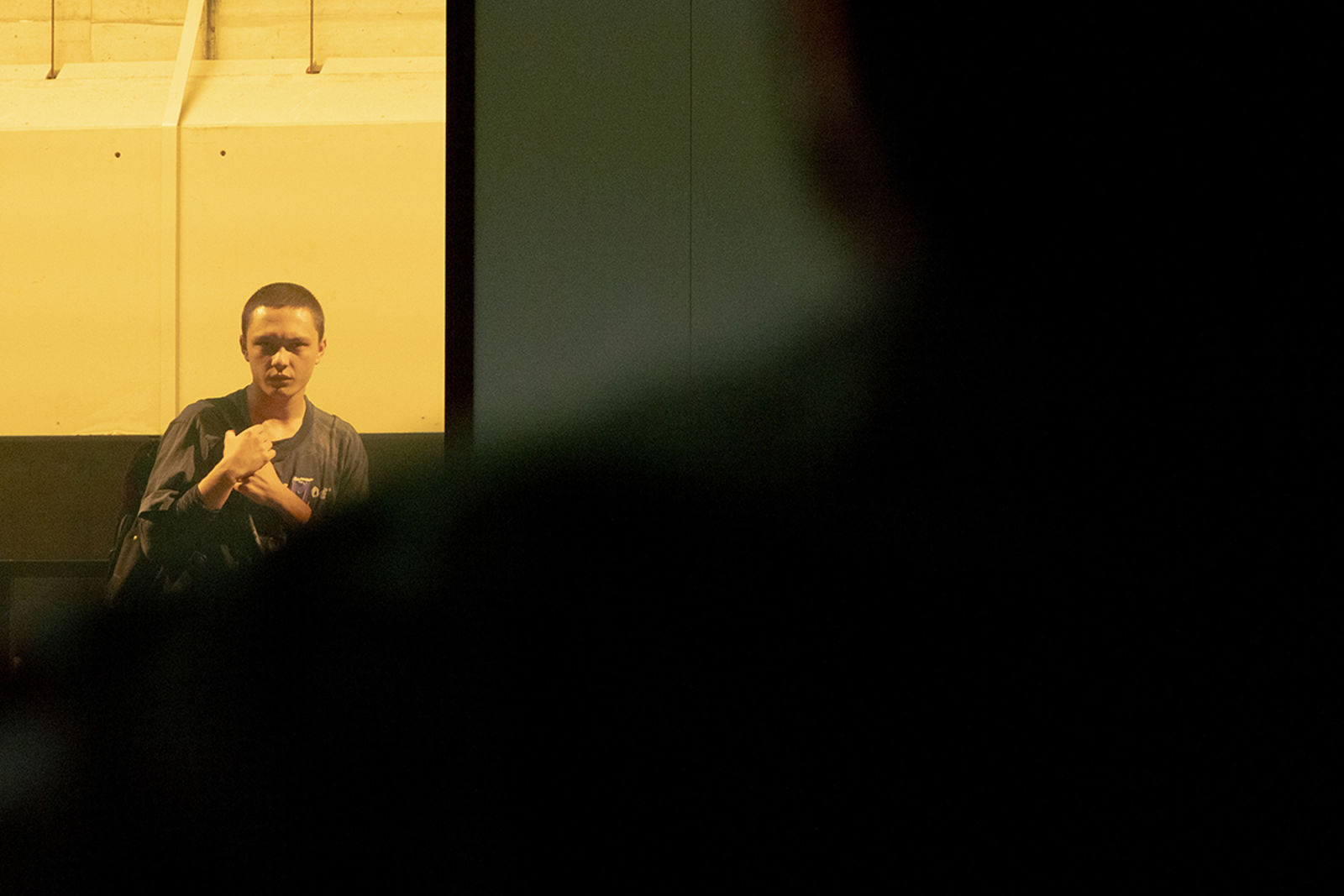
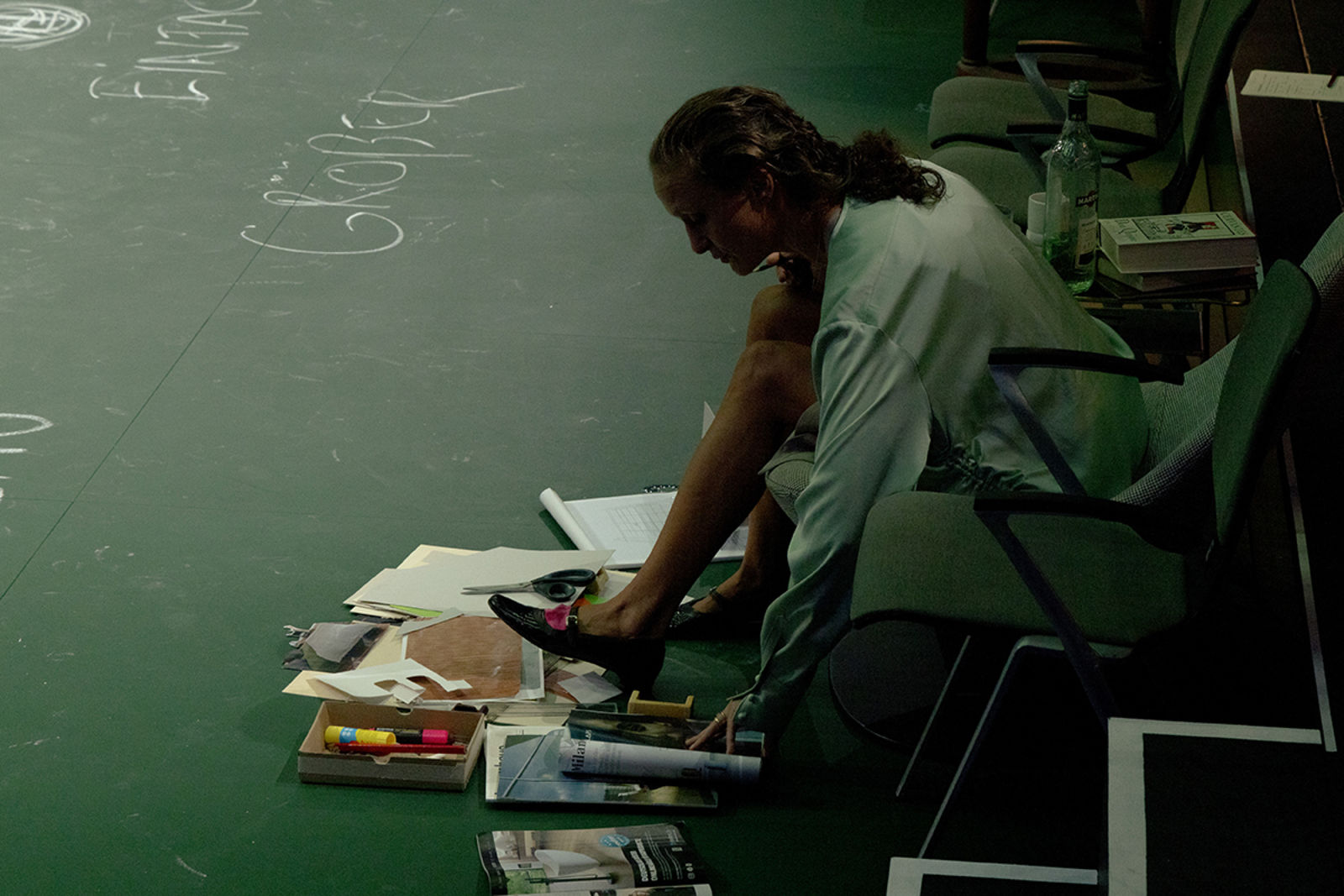
Otto Kosok
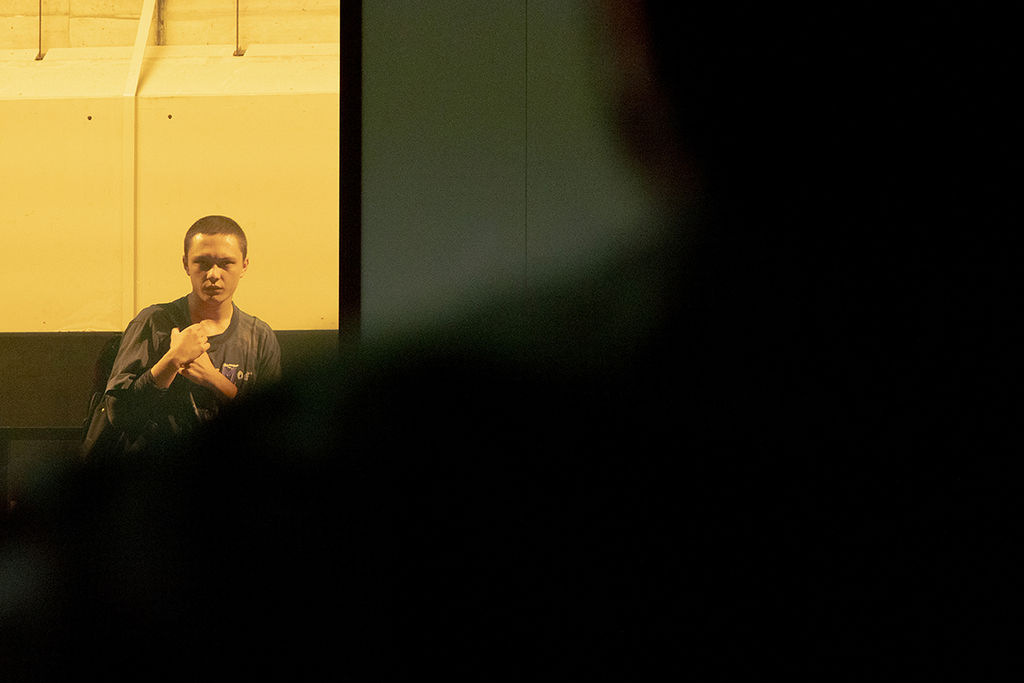
Otto Kosok
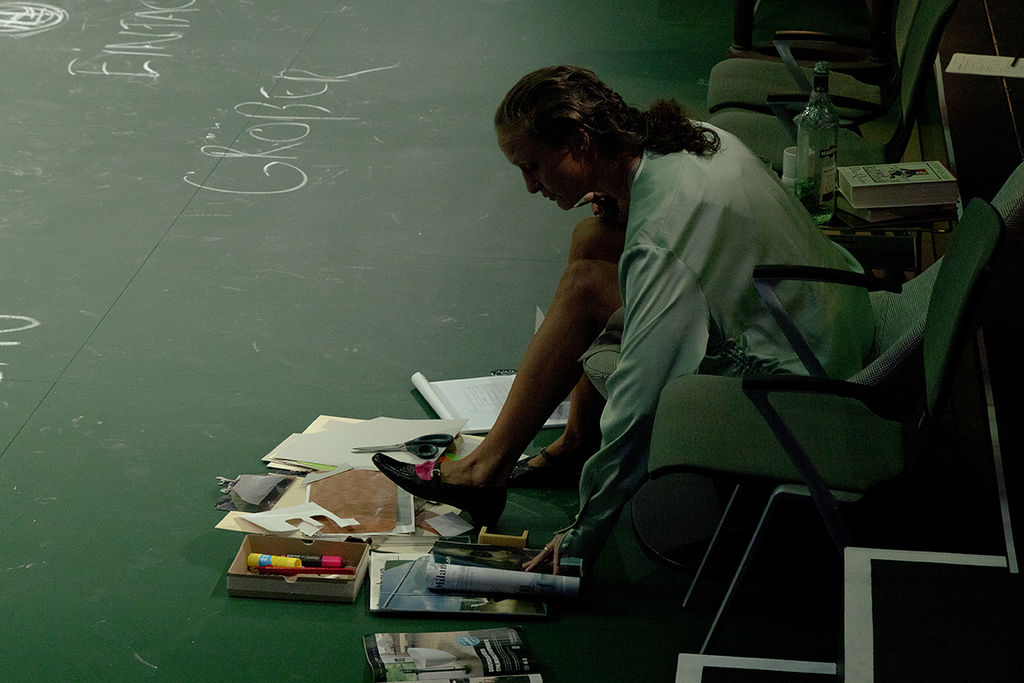
Lena Schwarz
The oval formed around the stage also appears in the play as Claudio and Rafa calculate ellipses during their maths exercises. The ellipse is one of Juan Mayorga’s most frequently used motifs in his work. It is characterised by being the geometric locus of points where the sum of the distances to two fixed points, the focal points, is a constant. In his opinion, the image of the ellipse is useful because it succeeds in showing the relationship between two unconnected motifs which, when connected, raise new questions. For Mayorga, “it is more productive to consider the object as the focus of an ellipse [...] than to draw a circle around it in which the perspectives to be adopted are equidistant from the thing observed”, as he writes in his 2010 essay Elipses de Benjamin.
This sounds abstract, but it can easily be understood through Christiane Jatahy’s staging of Mayorga’s play: In the spatial arrangement on the performance space, the director makes sure that she mirrors the same constellations of characters in different scenes along one axis. This allows the audience to get different perspectives on the same constellations, seeing one actor from the front and the other actress from behind in one scene, whilst seeing the reverse in the next. Or, in one scene, the actors are very close on a couch right next to a section of the audience and in another scene, the actors are far away, and it is necessary to look at the overall situation. As in film with long shots, half long shots, half close-ups and close-ups, Christiane operates in the stage design with shot sizes in order to illuminate the story of The Boy at the Back of the Classfrom different perspectives.
These changes in perspective make the spatial juxtaposition of the two couples possible from a staging point of view, although, in the play, they are only connected by Claudio’s essays. At first glance, Claudio’s texts seem harmless and it may be surprising how dismissive Joana reacts to the stories about Rafa’s family from the start. Linguistic images such as “the unmistakable scent of a middle-class woman” are strong, but remain the exception. Instead, it is mainly Claudio’s seemingly strategic actions that can be read between the lines in the essays: "He is going to need a lot of help to pass the maths this school. (To be continued)", meaning: “I will come back and continue my exploration of the strange family.” It is not entirely clear whether Claudio has a grand plan or whether things happen to him, whether he is attracted to the family because it represents the opposite of his own background or whether he hates them because of it.
“It is never a document of culture without at the same time being one of barbarism”, writes Walter Benjamin in his essay On the Concept of History. Juan Mayorga’s preoccupation with the German philosopher, critic and translator is also reflected in his play The Boy at the Back of the Class. Walter Benjamin’s Angel of History is one of the most famous images in the philosophical theses of history: The angel gazing in despair at the ruins of history ravaged by the storm of progress, which he cannot escape, and which draws him towards a terrible future built on the ashes of humanity. Claudio’s essays can be read as such cultural objects; they destroy the middle-class world and announce something unknown.
Walter Benjamin was accompanied throughout his life by the Angelus novus, a drawing by Paul Klee, which he acquired in a Munich gallery in 1921. Klee created a motif group of around fifty angels between 1915 and 1940. They are called Poor Angel, Bell Angel or Forgetful Angel. Klee himself described them as “creatures who are only in the antechamber of angelhood”. The picture Angelus Novus was painted in 1920 during Klee's stay in Munich, in the chaotic period following the violent dissolution of the Räterepublik, and it seems to reflect the turmoil: The angel has a frightened, perhaps also angry expression and is at most hintingly angelic. In a preface to his 2003 play Sonámbulo, Juan Mayorga writes about his image of angels: “One sleepless, nightmarish night, the poet's bedroom is haunted by angels – brutal and violent. But these angels [...] bring not hope but despair. They bring not abundance but absence. They are angels of loss and banishment. Instead of the meaning of the world, they proclaim its absurdity. They do not deliver a message or speak an incomprehensible message. They are modern angels, like those of Benjamin or Klee: Impotent angels. Angels of an emptied tradition that modern man regards more with fear than nostalgia. Angels of the uninhabited human being.”
The boy at the back of the class, Claudio, encounters these “eerie” angels whose wings look “like claws” in Rafa’s family home. There he contemplates the creatures, carried away by the wind, while he listens to the parents' petty middle-class quarrels. A truly horrible picture of the small family, especially since Paul Klee's angels are pure decoration for Rafa's parents: “They bought them to match the wall colour. When they repaint the wall, they get new paintings.”
However, Mayorga also sees hope in the ruins of history. In the preface to Sonámbulo, he writes that the old images have been destroyed, but new ones are rising from the rubble. In sleepless nights, artists search for a new art for a new world. “It is a time of nightmares, but also of big dreams. The middle-class world seems to be dying out and something unknown, beautiful or monstrous, is announcing itself. And art dares to be at the forefront of the great transformation.”

Ad

Ad
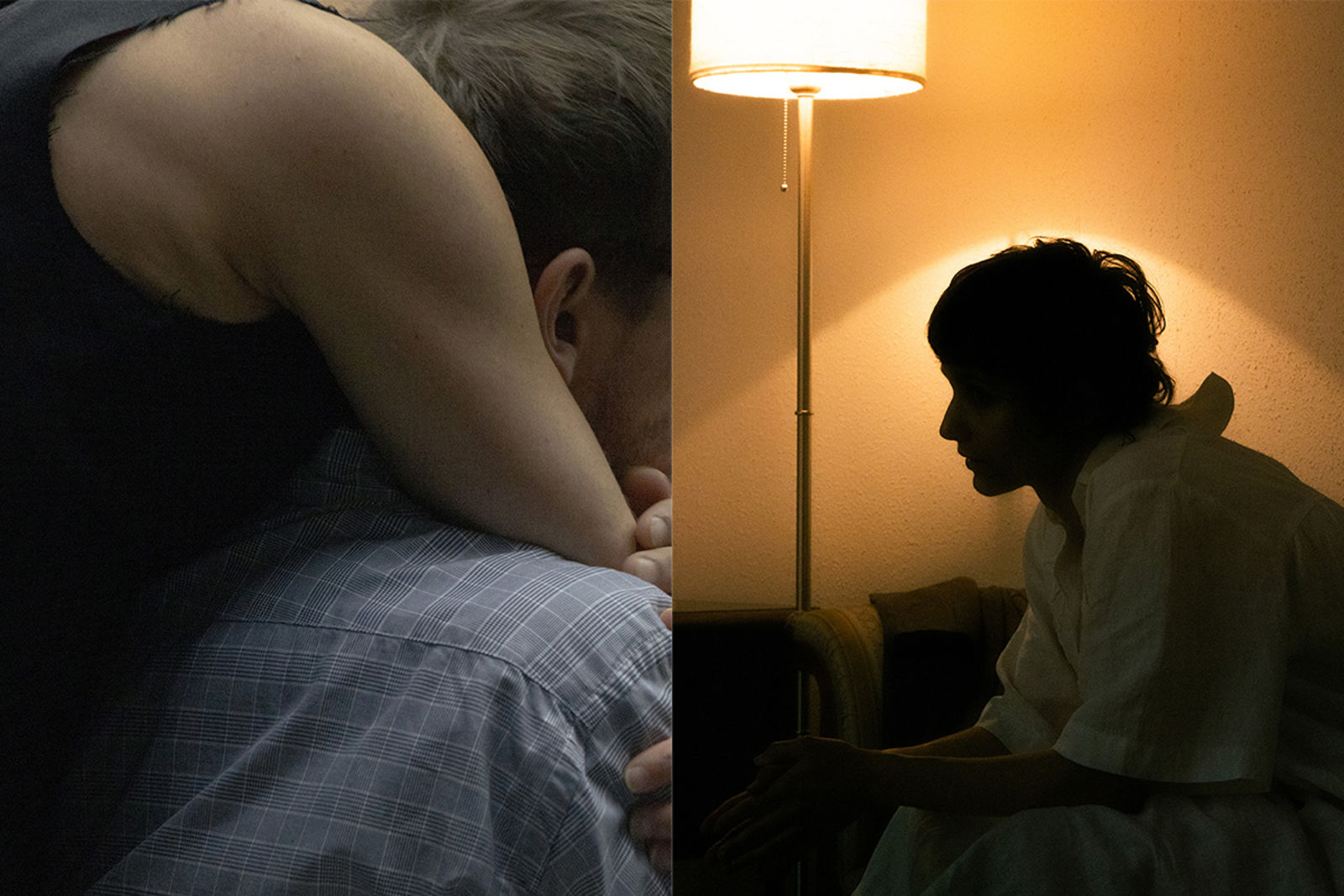
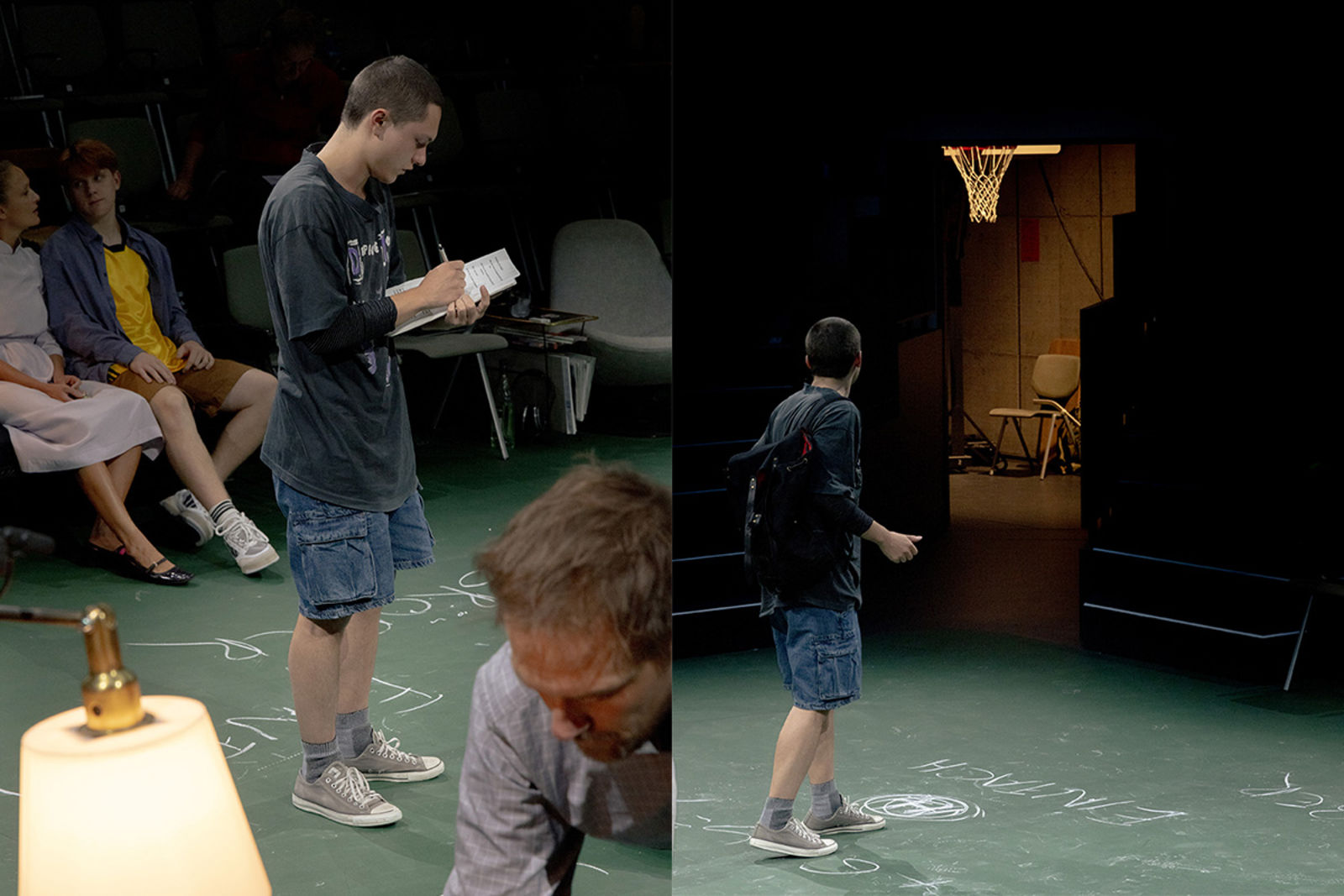
Daniel Lommatzsch, Tabita Johannes
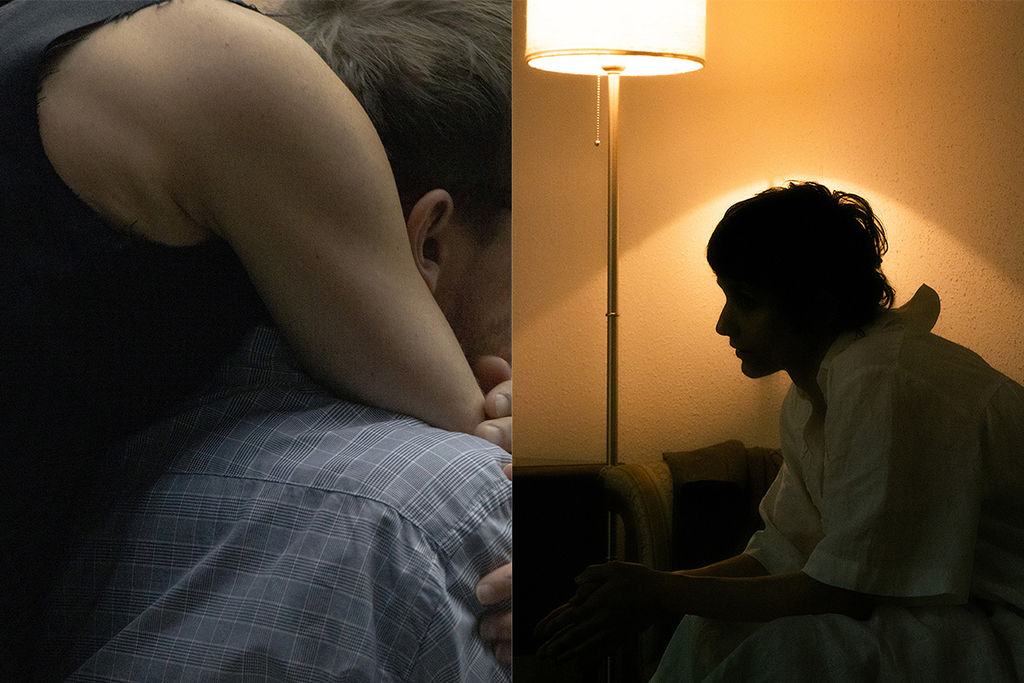
Daniel Lommatzsch, Tabita Johannes
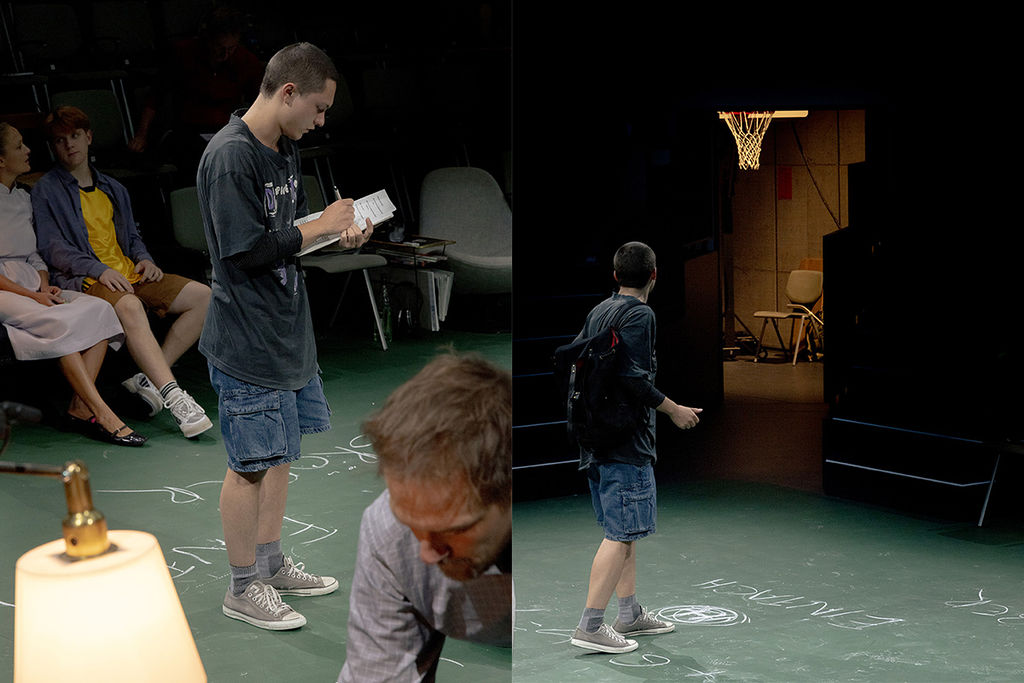
Lena Schwarz, Silas Lio Glanzmann, Otto Kosok, Daniel Lommatzsch
Video Interview
© Luisa Ricar
Video Interview
Editor: Bendix Fesefeldt
Photography: Binta Kopp
Offizielle Ausstatter des Schauspielhauses Zürich:
MAC Cosmetics, Optiker Zwicker, Ricola, Südhang Weine, Tarzan Swiss Streetfashion





